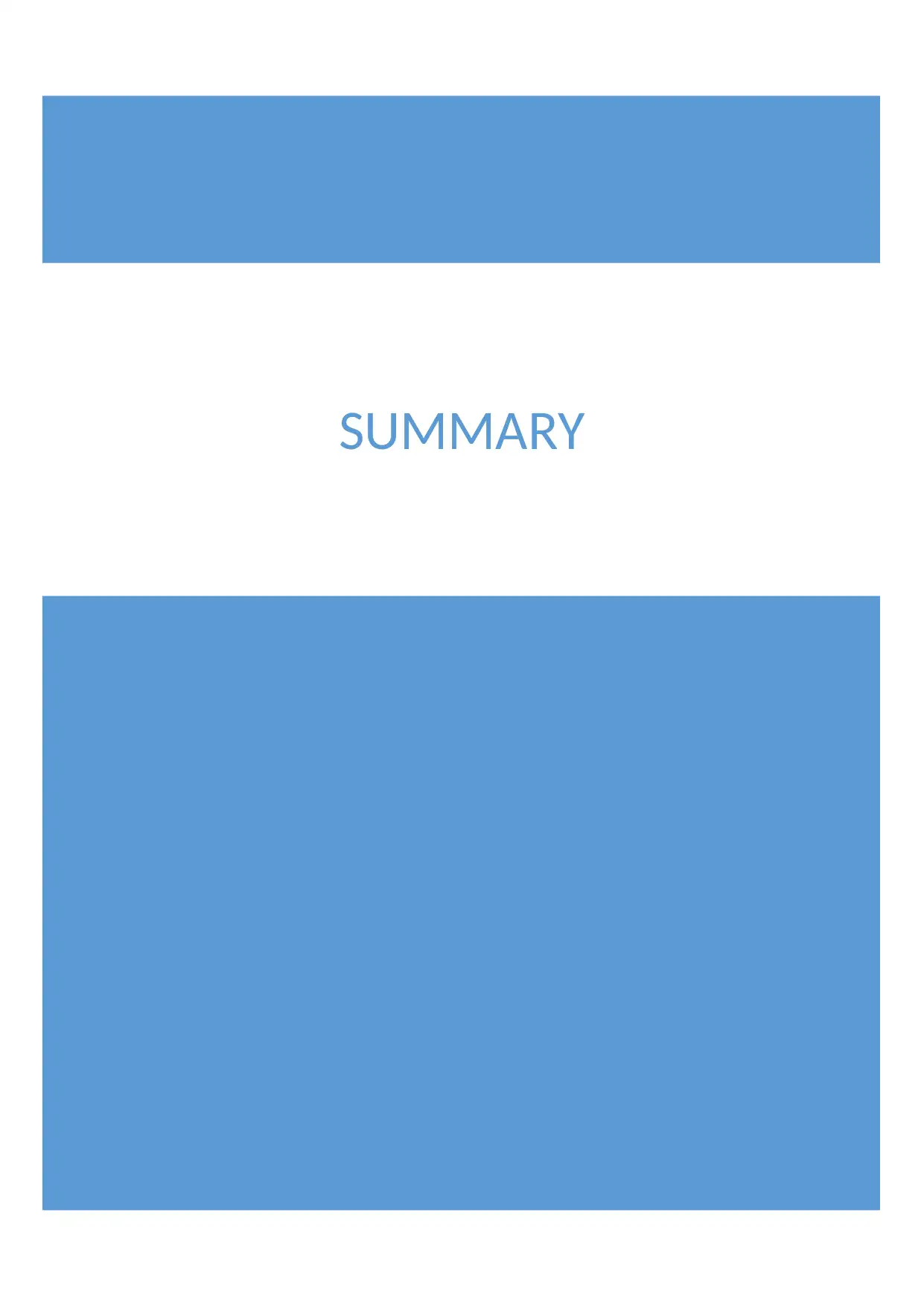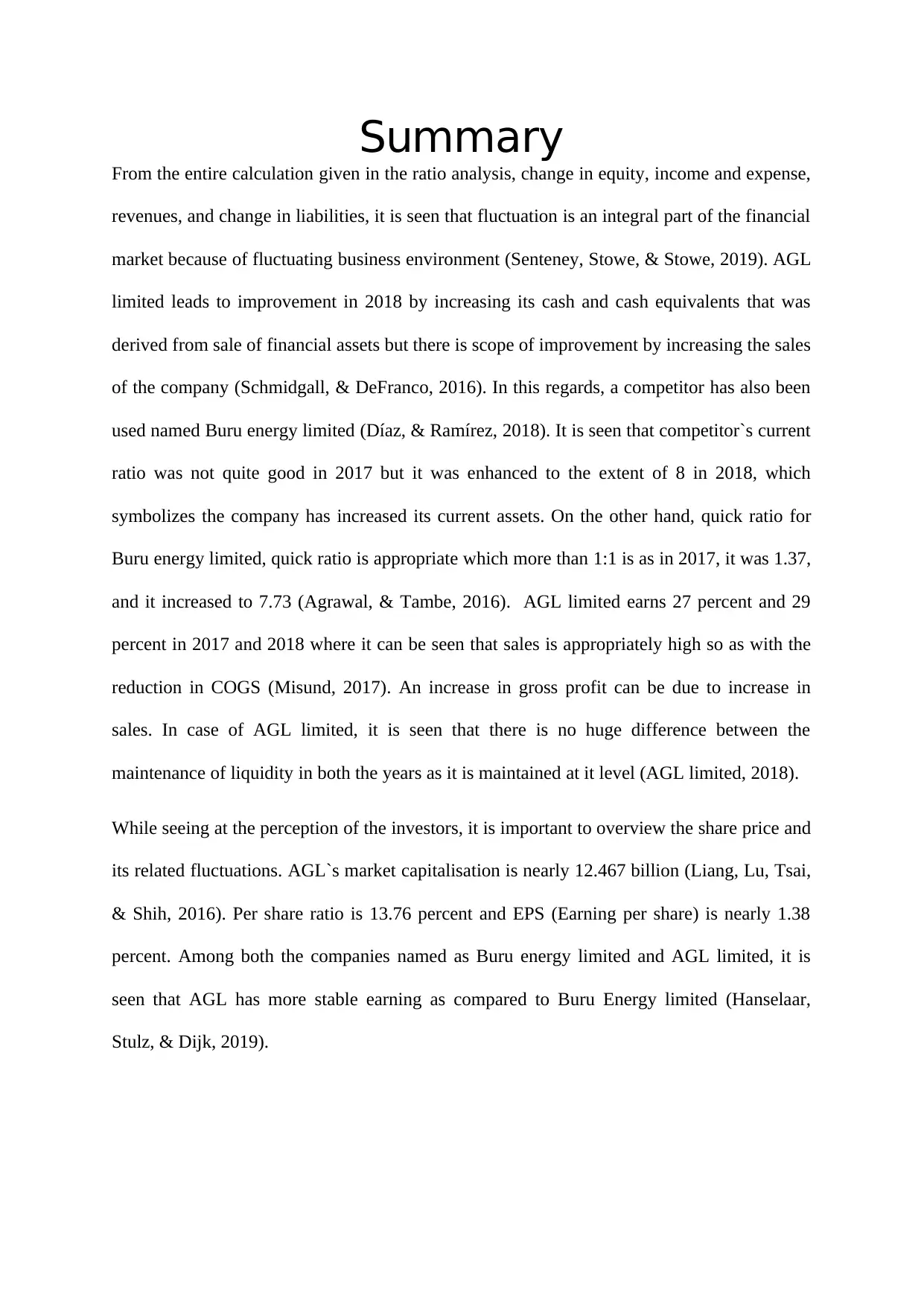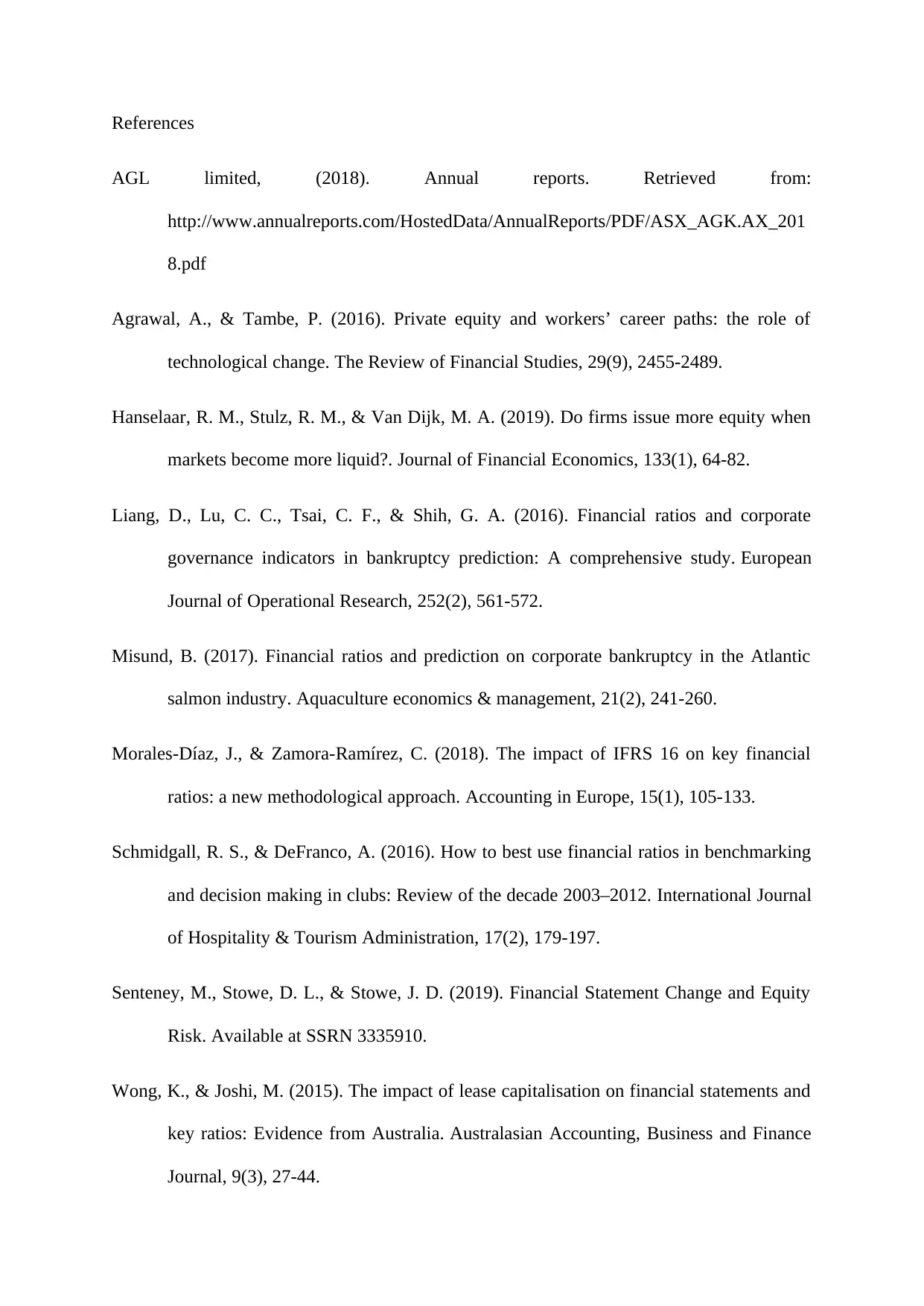Ratio Analysis of AGL Limited and Buru Energy Limited
VerifiedAdded on 2022/09/30
|4
|736
|84
AI Summary
This article provides a detailed ratio analysis of AGL Limited and Buru Energy Limited. It covers financial ratios, market capitalization, and EPS. The analysis shows that fluctuation is an integral part of the financial market due to the fluctuating business environment. AGL Limited leads to improvement in 2018 by increasing its cash and cash equivalents. However, there is scope for improvement by increasing the sales of the company. The article also discusses the perception of investors and the stability of earnings of both companies.
Contribute Materials
Your contribution can guide someone’s learning journey. Share your
documents today.
1 out of 4





![[object Object]](/_next/static/media/star-bottom.7253800d.svg)